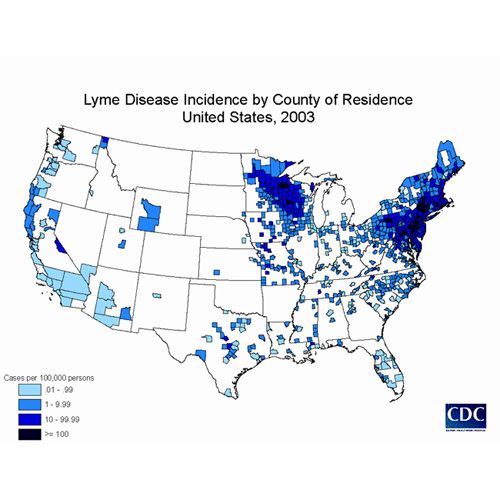While most of us know the signs of Lyme disease in people (a bullseye rash, flu-like symptoms and fatigue), the signs horses exposed to Lyme disease exhibit can be quite different. Interestingly, diagnosis and treatment in both horses and humans is the same!
By Sarah E. Coleman

Lyme disease, while the most prevalent of any tick-born disease in humans or animals in the United States, hasn’t gotten a lot of play in the horse world, at least in this part of the country. Most of the reported cases come from the Northeast, the upper Midwest and California, though this soon may change as the areas in which Lyme-infected ticks have been found spreads.
Ticks that carry Lyme disease are slowly expanding their area, which can be cause for concern for horse owners. First identified in Lyme, Conn., in the 1970s, the Centers for Disease Control tracks human cases of Lyme; there is no body that tracks equine cases, but it’s strongly believed that they occur in the same areas as human cases.
Lyme disease is caused by a bacterial spirochete called Borrelia burgdorferi. This disease infects dogs, cats, cattle and horses. Clinical signs of Lyme disease are caused by the inflammation of the membranes of joints and nerves.
Signs of Lyme disease can include:
- Fever
- Muscle pain
- Swollen joints
- Stiffness in the major joints, including hock, stifle, knee, elbow and fetlock
- Rotating, sporadic lameness
- Lack of energy
- Crankiness
- Overreaction to sensory stimuli, called hyperesthesia
How is it Diagnosed?
Vets will use a combination of history, blood tests, clinical signs, risk of probable exposure and antibiotic therapy to determine if a horse has Lyme disease. It’s important to remember that the results of the blood test do not always correlate to the disease status in the horse; horses will test positive for Lyme disease if they have been exposed to the organism even if the signs they are exhibiting are not tied to the disease.
Lyme can have long-term consequences on horses, including damage to skin, joints, nervous system and vision.
How is it Transmitted?
Lyme disease is transmitted when a blacklegged tick (including deer ticks and Western blacklegged ticks) feeds on a wild mouse that is infected with the disease. The tick, now infected itself, then feeds on human and animals, spreading the disease via blood. It is mainly adult ticks that infect horses and they generally cause infection in the spring and fall, though horses can become infected any time ticks are active (like during an unseasonably warm winter).
How is it Treated?
It’s important to note that all horses that are bitten by ticks infected with Lyme will not get the disease. Horses may be infected with Lyme disease, but not develop any signs. The horse is considered to have the disease when he begins to exhibit recognizable signs of the disease.
Like many equine diseases, early diagnosis is key to preventing the most-serious effects of the Lyme, though this may not be for five or six weeks after your horse has been bitten.
Many horses are treated for Lyme disease each year; treatment can be expensive, span a long period of time and carry some chance of toxicity. Almost all horses that have Lyme are treated with doxycycline, tetracycline or ceftiofur. Banamine or another anti-inflammatory may also be given to ease discomfort. Treatment usually lasts for 30 to 60 days.
There is no approved Lyme vaccination for horses on the market and there is no glimmer of one on the horizon. So how best to protect your four-legged friend? Limit his exposure to ticks that carry the bacteria if you live in an area where the disease is prevalent. This can be done by:
- Grooming your horse daily, looking for ticks specifically at the base of the mane and tail, around ears, belly and throatlatch.
- Using fly repellents that contain permethrins.
- Mow grass and brush in your horse’s fields, and cut down overhanging branches where ticks like to hide out.
